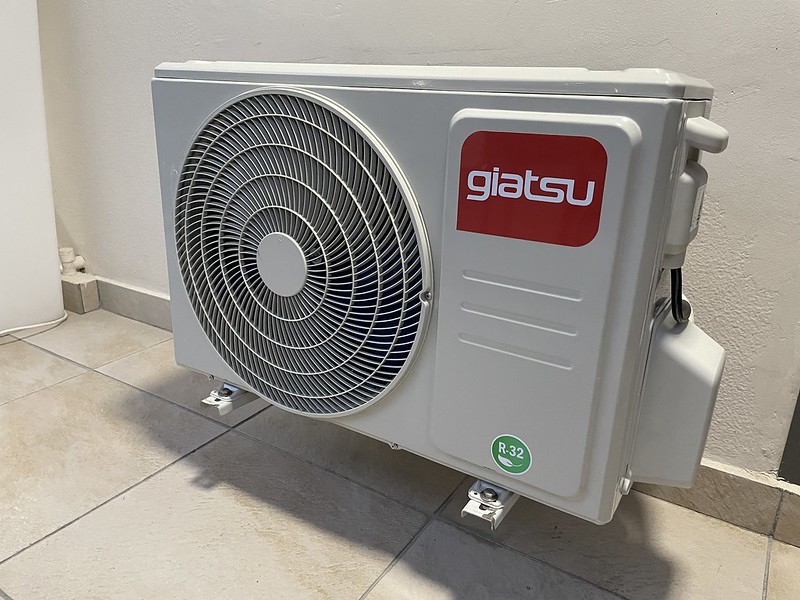When it comes to maintaining optimal indoor air quality and energy efficiency in a ductless mini-split system, the choice of a suitable ventilation unit is crucial. For DIY enthusiasts, the Energy Recovery Ventilator (ERV) and Heat Recovery Ventilator (HRV) are the go-to options, as they provide fresh air while recovering energy from the exhaust air, making them highly energy-efficient.
Understanding ERV and HRV Systems
An ERV or HRV system works by exchanging heat and moisture between the incoming fresh air and the outgoing exhaust air. This exchange helps to maintain the indoor air quality while minimizing energy loss. The system typically consists of a ventilation unit, an air filter, a heat exchanger, and ductwork to distribute the fresh air throughout the space.
The key difference between ERV and HRV systems lies in their ability to transfer moisture. ERVs are designed to transfer both heat and moisture, while HRVs primarily focus on heat transfer, with limited moisture exchange. The choice between an ERV and HRV will depend on the climate and the specific needs of your ductless mini-split system.
Factors to Consider When Selecting a Ventilation Unit
When choosing an ERV or HRV system for your ductless mini-split, it’s essential to consider the following factors:
1. System Size
The ventilation unit should be appropriately sized for the space to ensure efficient operation and adequate air exchange. A general rule of thumb is to provide 0.35 air changes per hour for a well-sealed home. To determine the correct size, consider the square footage of the space, the number of occupants, and the desired air exchange rate.
2. Efficiency Ratings
Look for systems with high efficiency ratings, typically measured in terms of effectiveness at transferring heat and moisture between the air streams. The Sensible Heat Recovery Efficiency (SHRE) and Latent Heat Recovery Efficiency (LHRE) are two important metrics to consider when evaluating the system’s performance.
3. Installation Considerations
Ensure that the ventilation unit is installed correctly, with proper ductwork and sealing to prevent air leaks and ensure efficient operation. This may involve coordinating with an HVAC professional to ensure the system is integrated seamlessly with your ductless mini-split.
4. Maintenance Requirements
Regular maintenance, including cleaning or replacing air filters, is essential to ensure the ventilation unit continues to operate efficiently. Review the manufacturer’s recommendations and plan for routine maintenance tasks to keep your system running at its best.
Technical Specifications and Considerations
When selecting an ERV or HRV system for your ductless mini-split, it’s important to delve into the technical details to ensure optimal performance and compatibility. Here are some key specifications and considerations:
Airflow Capacity
The ventilation unit should be capable of providing the necessary airflow to meet the space’s ventilation requirements. Look for units with adjustable airflow settings to accommodate changes in occupancy or air quality needs.
Heat Exchange Efficiency
The heat exchange efficiency of the system is crucial for energy savings. Look for units with high Sensible Heat Recovery Efficiency (SHRE) and Latent Heat Recovery Efficiency (LHRE) ratings, typically in the range of 70-90%.
Noise Levels
The ventilation unit should operate at a noise level that is comfortable for the occupants. Consider the sound power level (in dB) and look for units with sound-dampening features.
Ductwork Design
The ductwork for the ventilation system should be designed to minimize air resistance and pressure drops, ensuring efficient air distribution. This may involve calculating duct sizes, selecting appropriate fittings, and ensuring proper insulation.
Electrical Requirements
Ensure that the ventilation unit is compatible with the electrical system in your home, including the voltage, amperage, and any necessary control wiring.
Condensate Management
Depending on the climate and the system’s moisture transfer capabilities, the ventilation unit may produce condensate. Proper drainage and management of this condensate are essential to prevent water damage and maintain the system’s efficiency.
Installation and Integration with Ductless Mini-Split
Integrating the ventilation unit with your ductless mini-split system requires careful planning and execution. It’s recommended to consult with a professional HVAC contractor or a knowledgeable retailer to ensure the system is installed correctly and safely.
The installation process may involve:
- Determining the optimal location for the ventilation unit, considering factors such as accessibility, ductwork routing, and proximity to the ductless mini-split.
- Designing and installing the ductwork, ensuring proper airflow, sealing, and insulation.
- Connecting the ventilation unit to the electrical system and any necessary control wiring.
- Integrating the ventilation unit with the ductless mini-split system, ensuring seamless operation and coordination between the two systems.
- Commissioning the system, including testing airflow, verifying energy recovery performance, and adjusting settings as needed.
Maintenance and Troubleshooting
Proper maintenance is crucial for the long-term performance and efficiency of your ventilation unit. Follow the manufacturer’s recommendations for regular maintenance tasks, such as:
- Cleaning or replacing air filters
- Inspecting and cleaning the heat exchanger
- Checking for any air leaks or ductwork issues
- Verifying the proper operation of the system’s controls and sensors
If you encounter any issues with the ventilation unit, refer to the manufacturer’s troubleshooting guide or consult with a professional HVAC technician. Common problems may include reduced airflow, excessive noise, or decreased energy recovery performance.
By carefully selecting and properly installing an ERV or HRV system, you can ensure optimal indoor air quality and energy efficiency for your ductless mini-split system, making your home a more comfortable and sustainable living environment.

